175th Anniversary Lecture – Good Chemistry
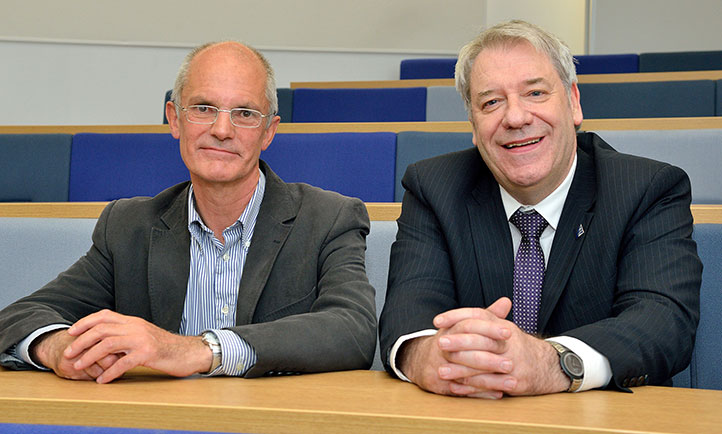 Speaker Professor Rob Brown (left) and Dr Martyn Walker
Speaker Professor Rob Brown (left) and Dr Martyn Walker
Fri, 27 May 2016 10:14:00 BST
Professor Rob Brown and Dr Martyn Walker explored the roots of chemistry in the early Huddersfield Mechanics’ Institution
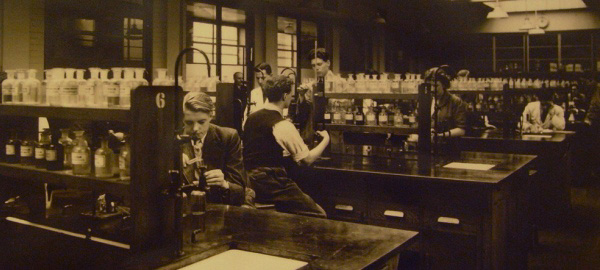 HUDDERSFIELD became a UK centre for chemical manufacture and research, especially in the field of dyes for colouring textiles. The reasons for this included exploitation of the “black gunk” that remained after coal had been used to provide gas – plus the vision and calibre of teachers at the educational institute that would evolve into the present-day University of Huddersfield.
HUDDERSFIELD became a UK centre for chemical manufacture and research, especially in the field of dyes for colouring textiles. The reasons for this included exploitation of the “black gunk” that remained after coal had been used to provide gas – plus the vision and calibre of teachers at the educational institute that would evolve into the present-day University of Huddersfield.
At the final public lecture in a series commemorating the 175th anniversary of the foundation of the University’s predecessor institution, Professor Rob Brown told the story of chemistry teaching and research in the town and how it was closely linked with the fortunes of local industry.
It was in 1841 that a Young Men’s Mental Improvement Society – soon to be renamed the Mechanics’ Institution – was established in the town. The modern University of Huddersfield is a direct descendent of this and chemistry has been on the curriculum since 1843, said Rob Brown, who is recently retired as Professor of Chemistry at the University where he taught and researched since 1997.
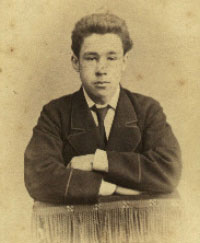 Until the mid-19th century, chemistry was regarded as an esoteric subject, little more than a hobby. But the development of industry and the need for Britain to keep up with its European competitors, especially in textiles manufacture, resulted in a new attitude to chemistry, and the Huddersfield Mechanics’ Institution would play an important role.
Until the mid-19th century, chemistry was regarded as an esoteric subject, little more than a hobby. But the development of industry and the need for Britain to keep up with its European competitors, especially in textiles manufacture, resulted in a new attitude to chemistry, and the Huddersfield Mechanics’ Institution would play an important role.
There was a milestone in 1856, when the youthful William Perkin (pictured left), attending London’s Royal College of Chemistry, discovered that it was possible to synthesise a mauveine dye from components of coal tar.
It was “a horrible material, what’s left when you gasify coal – a black gunk that would come running out when you made town gas,” said Professor Brown. But Perkin’s work, showing the potential uses of coal tar chemicals, opened up the field of organic chemistry, including the production of dyestuffs, and Huddersfield was perfectly placed to take advantage.
This was because it already had an important textile industry; there were coalfields in the district – meaning coal tar was plentiful; and there were very high calibre chemistry teachers at the Mechanics’ Institution.
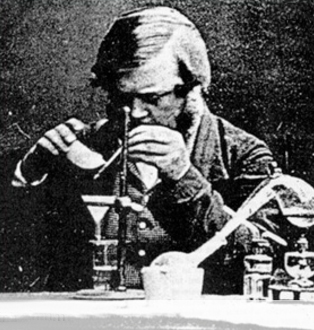 In his lecture, Professor Brown outlined the careers of some of the key figures in chemistry teaching and research at Huddersfield Mechanics’ Institute and its successors, culminating in the University of Huddersfield.
In his lecture, Professor Brown outlined the careers of some of the key figures in chemistry teaching and research at Huddersfield Mechanics’ Institute and its successors, culminating in the University of Huddersfield.
The towering figure in the early part of the story was George Jarmain (pictured right) – founder of a long-lived wool textile firm that bore his name.
He joined the Mechanics’ Institution part-time in 1855 and later became an inspirational full-time teacher until his retirement in 1895 and was the author of many textbooks.
Jarmain expanded the chemistry department at the Institution and presided over a “boom time” for the subject from the 1860s onwards. There were rising numbers of students, who sat national examinations, and they had improved facilities, especially when the Ramsden Building – still at the heart of the University of Huddersfield – was opened in 1884.
Professor Brown described the personalities and achievements of several other figures in the saga of chemistry teaching in Huddersfield and he outlined important developments such as the Government’s decision in 1916 to form British Dyes Ltd, based around the Huddersfield firm Read Holliday.
This meant that the town became the UK centre for dyestuffs and for research and teaching in colour chemistry at the Technical College, as the Institution was now known.
The lecture brought the story of chemistry at Huddersfield up to the present day, with the achievements of recent and contemporary researchers and professors.
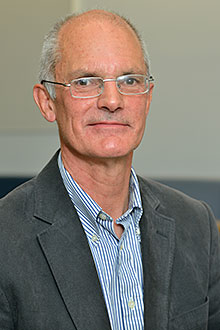 During the 1990s, there was a crisis in chemistry teaching throughout the UK university sector, with many departments closing down, said Professor Brown. But the University of Huddersfield kept faith with a subject that had been taught since 1843.
During the 1990s, there was a crisis in chemistry teaching throughout the UK university sector, with many departments closing down, said Professor Brown. But the University of Huddersfield kept faith with a subject that had been taught since 1843.
“It is to the eternal credit of people running this university that they stuck with the study of chemistry as a core subject. Now, there are large numbers of students, provided with excellent facilities. The future of Huddersfield as a chemistry town looks good.”
Setting the scene
Professor Brown’s lecture was preceded by a talk from Dr Martyn Walker, who is a historian of the Mechanics’ Institute movement as a whole and Huddersfield Mechanics’ Institution in particular.
Dr Walker began the 175th Anniversary series with a talk entitled The Class of 1841, and in the concluding session he reprised some of his themes and also set the scene for Professor Brown’s lecture by emphasising the importance of chemistry as a subject in the early years of the institution. It was of great relevance to the local textile industry and classes for chemistry and for loom weaving at the Mechanics’ Institution were always full.
Chemistry was also taught at many of the smaller mechanics’ institutes in the Huddersfield district and they had laboratory facilities. But those at the Huddersfield Mechanics’ Institution were of a higher standard than at most universities during the period, said Dr Walker.







